Author: Cade Jobe
One of the incredible advantages of beer over other fermented beverages is the ubiquity of ingredients that can be used to impart complex and desirable flavors. Fruity descriptors are common in brewing—certain yeasts produce banana notes, a number of hop varieties are known to possess citrus characteristics, and grain can impart raisin or even cherry-like flavors. However, sometimes malt, hops, and yeast just aren’t enough, which is when some rely on using actual fruit to add a more pungent and unique twist to beer.
There’s nothing new about using fruit in beer, though recently it seems doing so has become quite popular in a wide range of styles, and there are a few methods brewers use to make such additions. One approach is to simply add the fresh fruit directly to the beer, usually toward the end of fermentation, though this increases the risk of unwanted microbes potentially ruining it. It’s also more of a one-and-done approach, as once the fruit is in the beer, making adjustments to the fruit character can be difficult. Another option involves dosing the beer with a tincture, which is a concentrated infusion made by soaking the desired fruit in a neutral spirit, such as vodka or grain alcohol. In addition to eliminating the beer coming into contact with the fruit, the higher alcohol in the spirit serves a sanitizing function, thus reducing the risk of something going awry.
I enjoy experimenting with different flavors in my brewing, and with summer coming to an end, I was looking to make something I associate with the fall, which this year happened to be plums. In the past, I’ve tended to add fruit directly to the beer while in the fermenter, but I was reminded of a past xBmt on using a tincture to make chili pepper additions and decided to test it out again for myself.
| PURPOSE |
To evaluate the difference between beers with fruit added directly to the beer or with fruit added via tincture.
| METHODS |
In my experience, plums impart a deep jammy sweetness to beer that pairs well with grains like Special B and darker caramel malt varieties. Having used plums in a Belgian Dubbel in the past, I went with that style for this xBmt and used a recipe of my own that’s tried-and-true.
Straight As An Arrow
Recipe Details
| Batch Size | Boil Time | IBU | SRM | Est. OG | Est. FG | ABV |
|---|---|---|---|---|---|---|
| 5.2 gal | 60 min | 23.8 IBUs | 15.6 SRM | 1.057 | 1.008 | 6.5 % |
| Actuals | 1.057 | 1.004 | 7.0 % | |||
Fermentables
| Name | Amount | % |
|---|---|---|
| Pilsner (Weyermann) | 7 lbs | 59.57 |
| Munich I (Weyermann) | 1 lbs | 8.51 |
| Aromatic Malt (Briess) | 8 oz | 4.26 |
| Caramunich Malt | 8 oz | 4.26 |
| Special B Malt | 8 oz | 4.26 |
| Candi Syrup, D-45 | 12 oz | 6.38 |
| Cane (Beet) Sugar | 8 oz | 4.26 |
| Fresh Plums | 1 lbs | 8.51 |
Hops
| Name | Amount | Time | Use | Form | Alpha % |
|---|---|---|---|---|---|
| Hallertau Magnum | 14 g | 60 min | Boil | Pellet | 14 |
Yeast
| Name | Lab | Attenuation | Temperature |
|---|---|---|---|
| Gnome (B45) | Imperial Yeast | 74% | 65°F - 75°F |
Notes
| Water Profile: Ca 75 | Mg 17 | Na 18 | SO4 93 | Cl 58 |
Download
| Download this recipe's BeerXML file |
A couple days ahead of time, I made a starter of Imperial Yeast B45 Gnome.
On brew day, after collecting the water for a 10 gallon/38 liter batch and adjusting it to my desired profile, I lit the flame under the kettle to get it heating up.
I weighed out and milled the grain.
Once the water was properly heated, I incorporated the milled grains then checked the mash temperature.
During the mash rest, I collected out the kettle hop addition.
When the 60 minute mash was complete, I sparged to collect the pre-boil volume.
While the wort was boiling I prepared the fresh plums by first dicing 2 lbs/907 g then putting half in a zip bag that was placed in my freezer while the other half was submerged in 8 oz/235 mL of Everclear.
When the 60 minute boil was complete, I quickly chilled the wort with my IC before taking a hydrometer measurement showing the OG was slightly lower than expected.
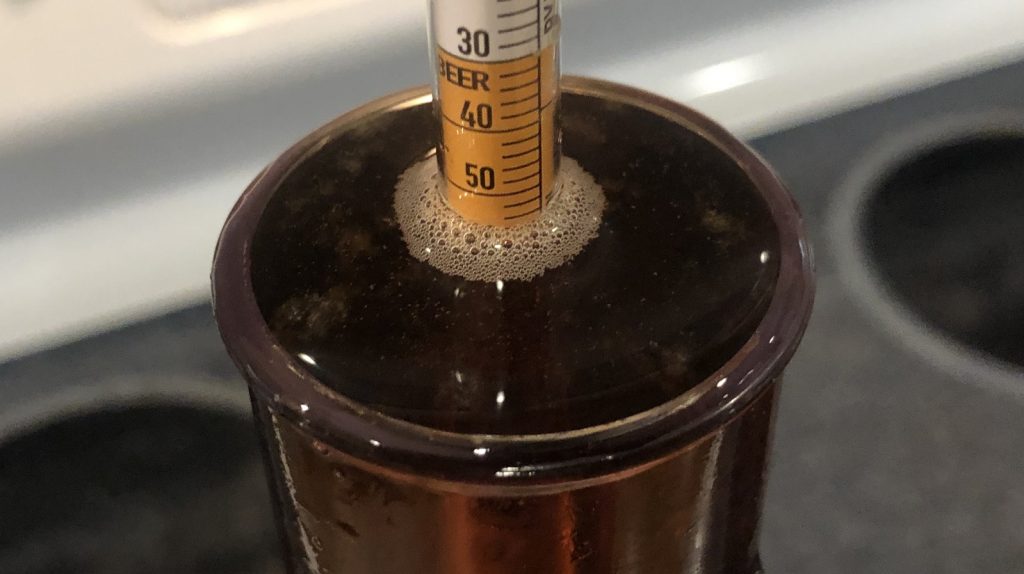
After evenly splitting the wort between 2 sanitized Brew Buckets, I placed both in my fermentation chamber and left them alone for a bit to finish chilling. With the worts stabilized at my desired fermentation temperature of 66°F/19°C, I evenly split the starter between them. Noticing slowed activity a week into fermentation, I decided it was time to add the plums. After separating the fruit matter from the infused Everclear, I added the frozen fruit directly to one beer and poured the tincture into the other.
The beers were left alone for another 10 days before I took hydrometer measurements showing the fresh fruit beer finished 0.001 FG point higher than the tincture beer.
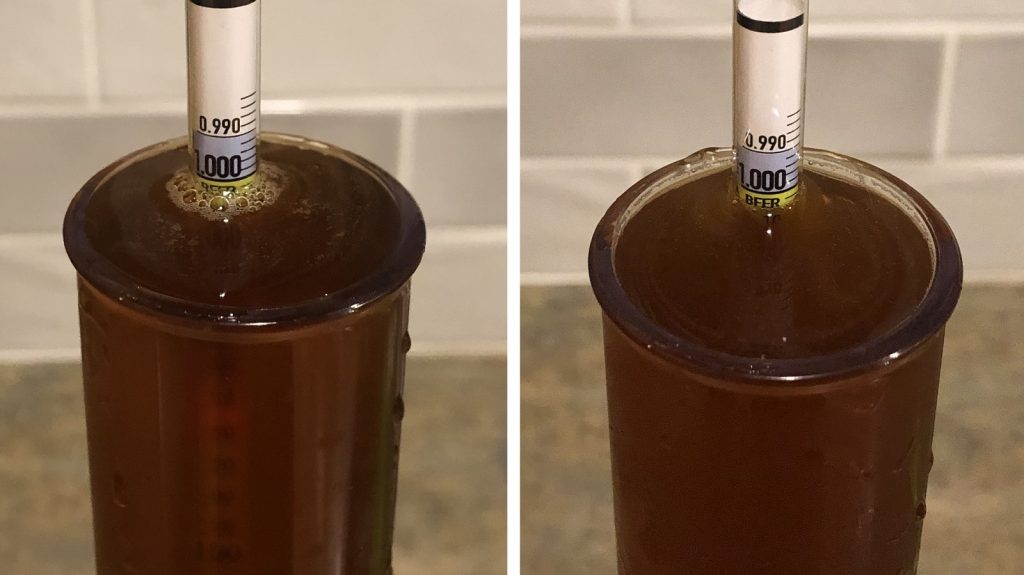
At this point, the beers were cold crashed to 32°F/0°C overnight before I returned to transfer each to a CO2 purged keg.
The filled kegs were placed in my keezer, burst carbonated, and left to condition for a week before they were ready to evaluate.
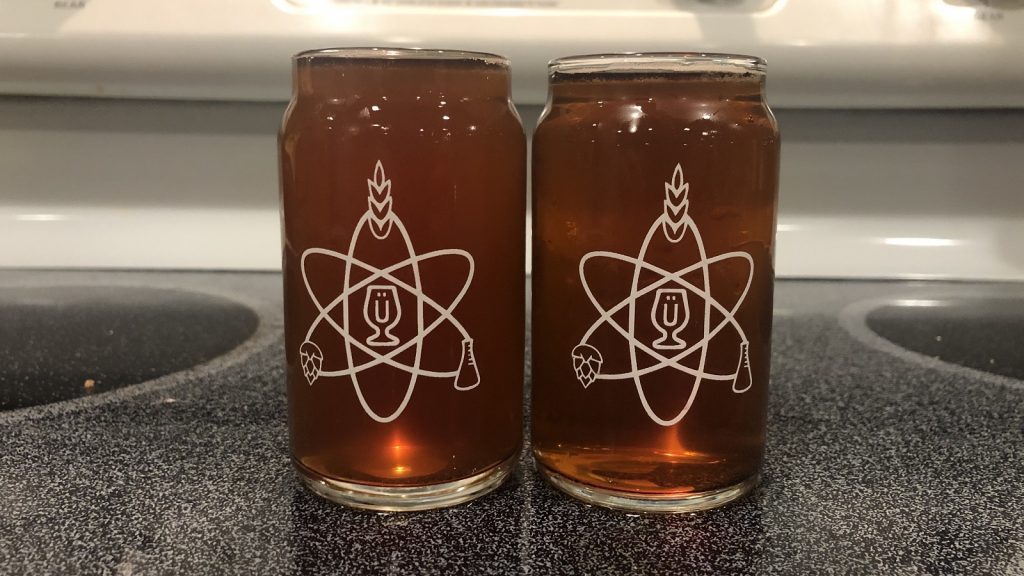
| RESULTS |
Due to social distancing practices as a result of the COVID-19 pandemic, data for this xBmt was unable to be collected in our typical manner. As such, temporary adaptations were made involving the author completing multiple semi-blind triangle tests in as unbiased a way as possible.
Utilizing 4 opaque cups of the same color where 2 were inconspicuously marked, one set was filled with the beer made with frozen plums while the other set was filled with the beer made with the plum tincture. For each triangle test, 3 of the 4 cups were indiscriminately selected, thus randomizing which beer was the unique sample for each trial. Following each attempt, I noted whether I was correct in identifying the unique sample. Out of the 10 semi-blind triangle tests I completed, I needed to identify the unique sample at least 7 times (p<0.05) in order to reach statistical significance. I correctly identified the unique sample 10 times, (p= <0.0003), indicating my ability to reliably distinguish a Belgian Dubbel made with frozen plums from one made with a plum tincture.
I perceived the tincture beer as having a slight sharpness to it whereas the fresh fruit beer was more rounded on the palate. While different enough for me to be able to tell them apart very consistently, the beers were very similar and I struggled to determine a preference. Both had plenty of jammy plum flavor that complimented the malt and slightly phenolic yeast character. Great beers to have around for the beginning of fall!
| DISCUSSION |
Adding fruit to beer as a way to produce unique characteristics has become very popular lately, with consumers pining for the next fruit-bomb and brewers happy to oblige. Given concerns related to adding fruit directly to beer, such as the increased risk of contamination and actual fruit matter making its way to the package, some brewers rely on tinctures instead. While some have claimed either method produces the same results, my ability to reliably distinguish a Belgian Dubbel made with frozen plums from one made with a plum tincture suggests otherwise.
In thinking about possible explanations for these results, the first thing that comes to mind is the fact the tincture beer had nearly 8 oz/235 g of Everclear added to it. Considering that’s just 1.3% of a 5 gallon/19 liter batch, it’s hard to believe it’d have much of a flavor impact, but perhaps it did. I also wonder if the skin of the plums in the frozen fruit batch may have contributed something unique that made it perceptibly different than the tincture beer. One objective difference I observed was that the beer made with the tincture had a higher yield than the one made with frozen fruit, which is a definite plus as batch sizes increase.
Despite clearly tasting a difference in the beers, I thought both were excellent and made for a perfect introduction to the fall season. Seeing as I’ve had success adding fruit directly to beer, I’ll continue doing just that because it’s a bit simpler, though I have nothing against using tinctures and view it as a great method that also results in less beer loss. I look forward to doing more xBmts with tinctures in the future using various fruits in different styles of beer.
If you have any thoughts about this xBmt, please do not hesitate to share in the comments section below!
Support Brülosophy In Style!
All designs are available in various colors and sizes on Amazon!
Follow Brülosophy on:
FACEBOOK | TWITTER | INSTAGRAM
If you enjoy this stuff and feel compelled to support Brulosophy.com, please check out the Support page for details on how you can very easily do so. Thanks!



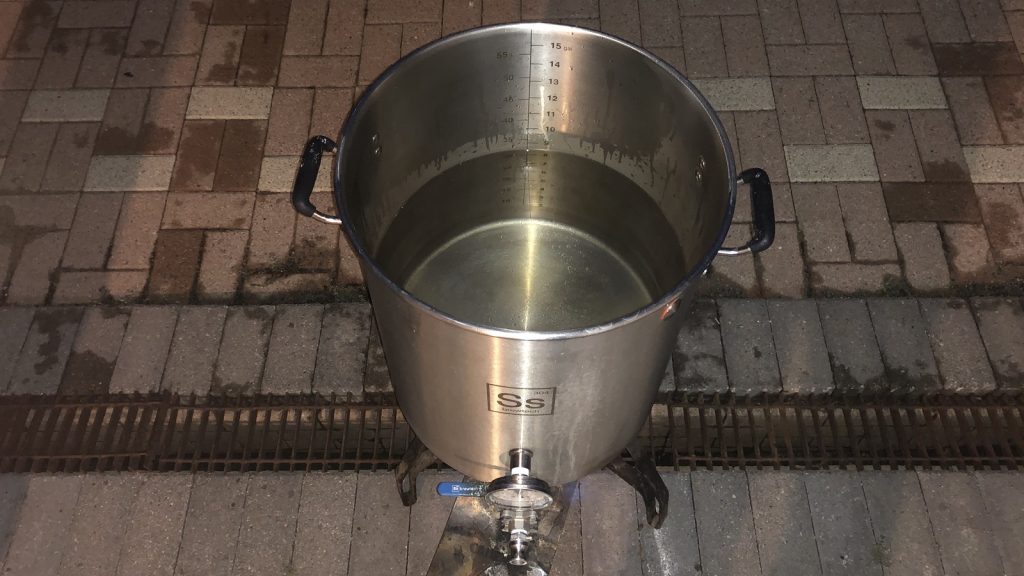
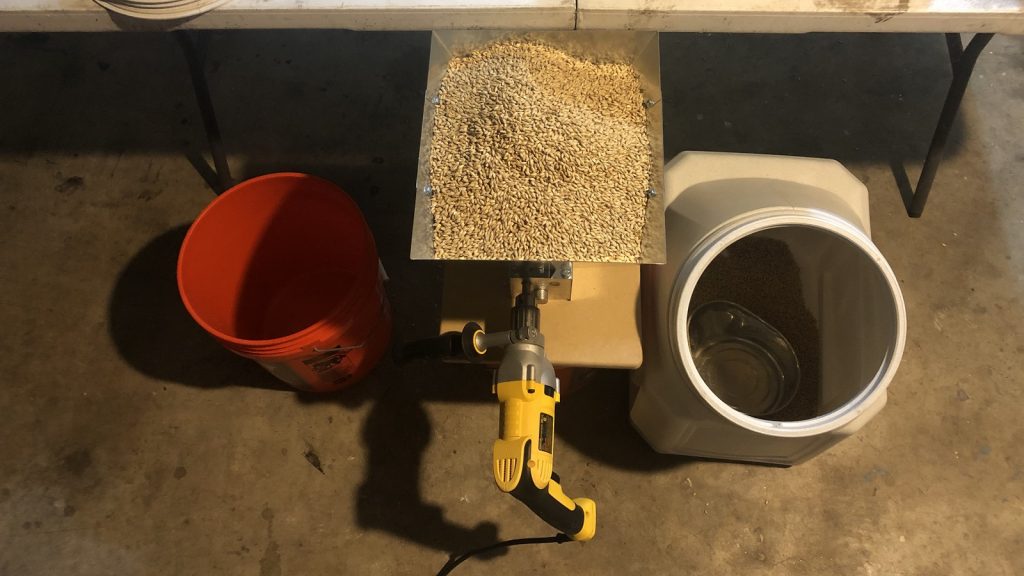
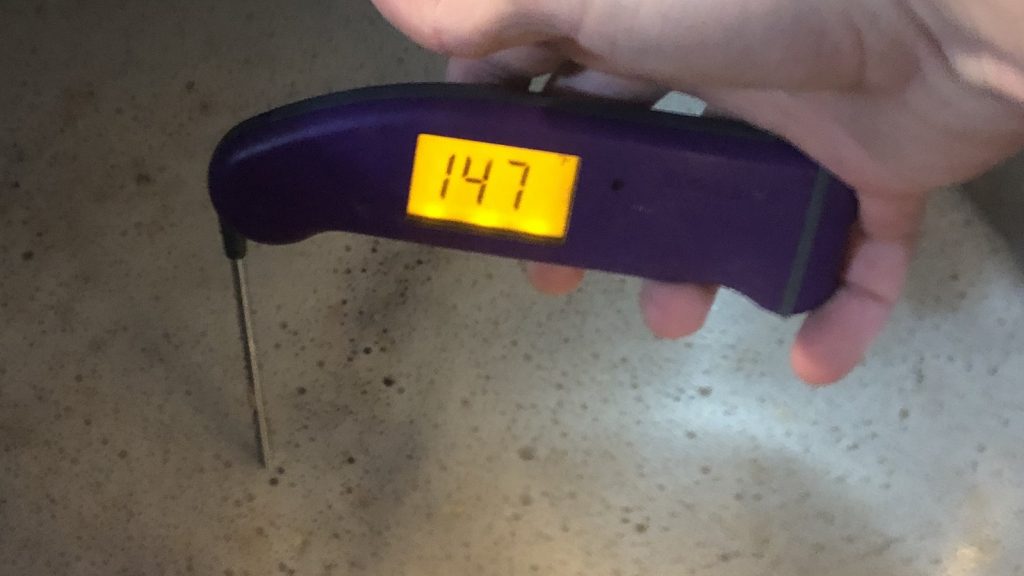
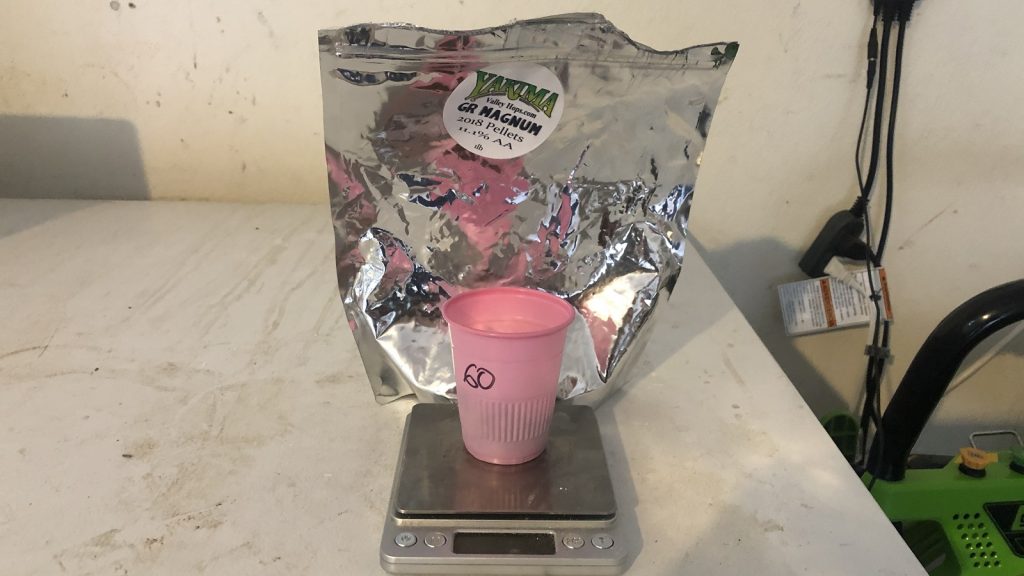
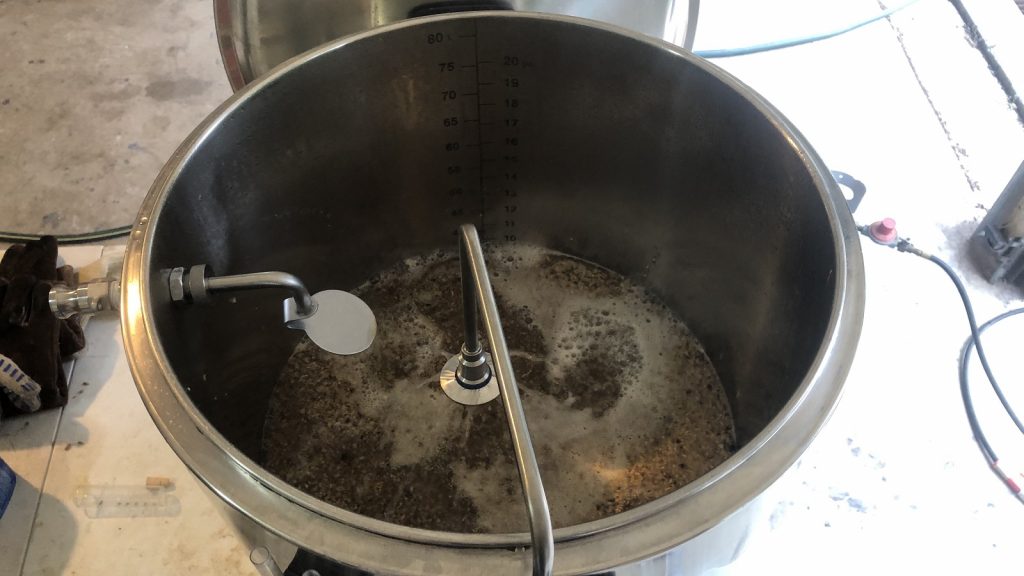
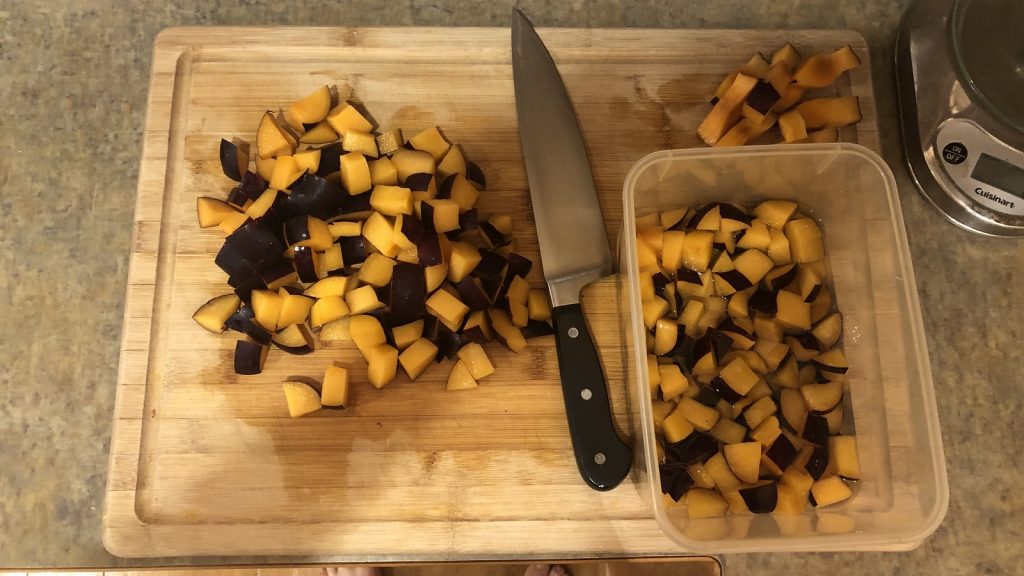
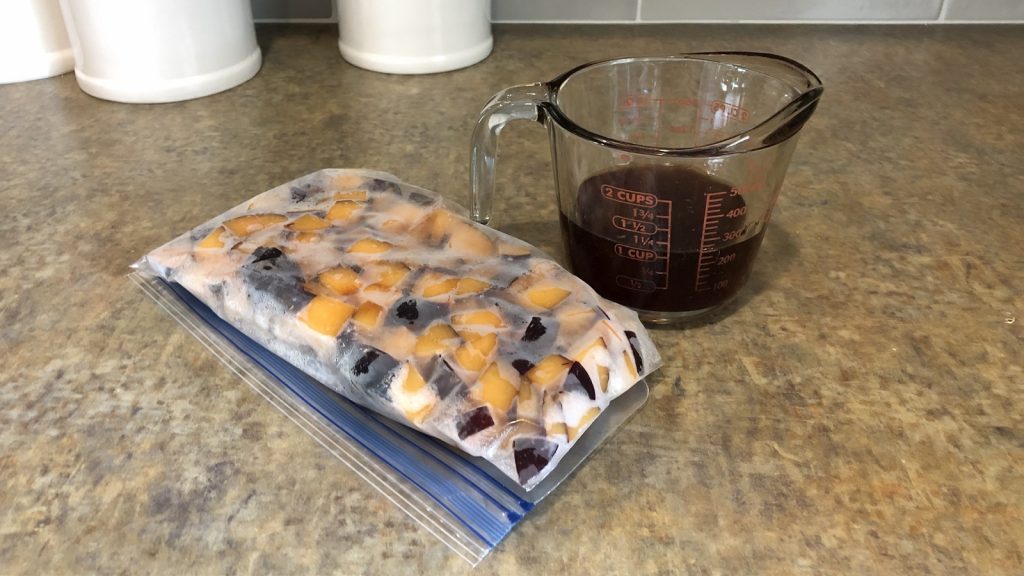
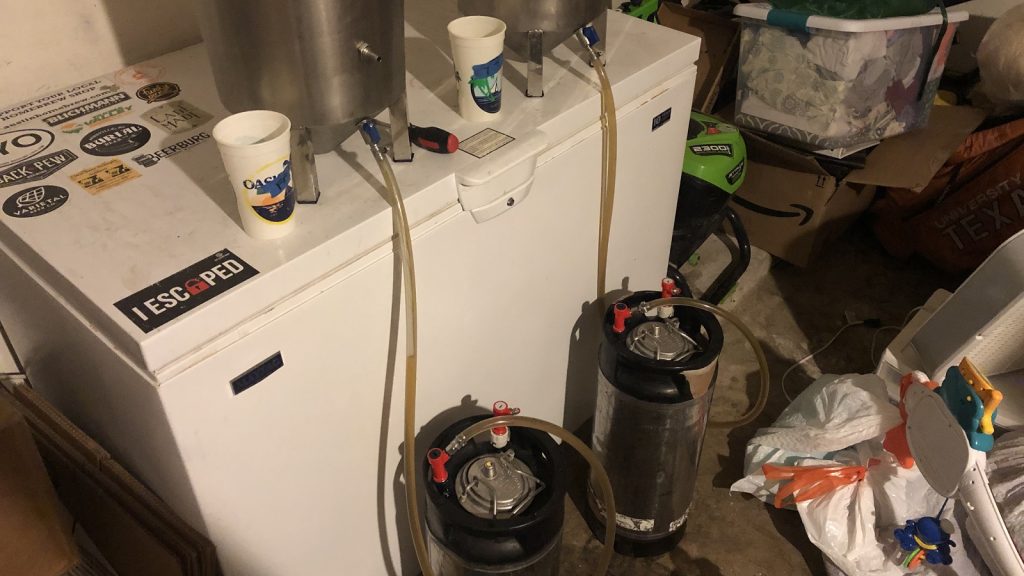











10 thoughts on “exBEERiment | Frozen Fruit vs. Tincture In A Belgian Dubbel With Plums”
Interesting. I’ve never done a fruit tincture. I make tinctures for spices and hot peppers ( which I guess technically is a fruit) because their strength is always random from brand to brand or year to year. It makes it far easier to dose to taste. I dumped a beer a few years back that called for 2 jalapeños. I grow a very large jalapeño variety that happened to be very hot due hot dry summer weather. Nobody could drink the beer.
Sounds like that would make an excellent Red Beer!
Unless I’m calculating it wrong, the everclear increased the alcohol percentage by about 20%. I think that is enough to produce a flavor difference.
Dont drink everclear while calculating Jeff 😁
It’s a 7% ABV beer. So in 5 gallons of beer (18.9L) there would be about 18.9L * 0.07 = 1.323L of alcohol. There was 0.235ml of Everclear added making it 1.558L total. Which makes it 1.558 / 19.135 * 100 = 8.1% ABV beer. So, it’s about 15% more alcoholic.
Jeff’s calculations seem to be spot on to me, Mr T.
540 oz of beer at 5.7% ABV is 36.5 oz of alcohol.
An additional 8 oz of alcohol (Everclear is at least 95% ABV) is about 20% more.
Interesting to read. What about a control next time with only the everclear to see if this changed taste to the sharpness you wrote. Thinking of making a tincture of rosemary for a oatmeal stout, so all info about tinctures is welcome.
A lot of info online and on Facebook groups I’m in say you should use around 1 pound per gallon of fruit, on average. Maybe use more fruit for a more dramatic flavor experience?
Great exbeerment, and great episode on podcast!
One question: is there any reason for using that water porfile slightly balanced to sufate (1,6:1 ratio)? I always thought that a Dubbel would be better with a cloride foward ratio.
It would probably be good either way, but I prefer the dubbel to be fairly dry, which is why the sulfate level is just slightly higher.